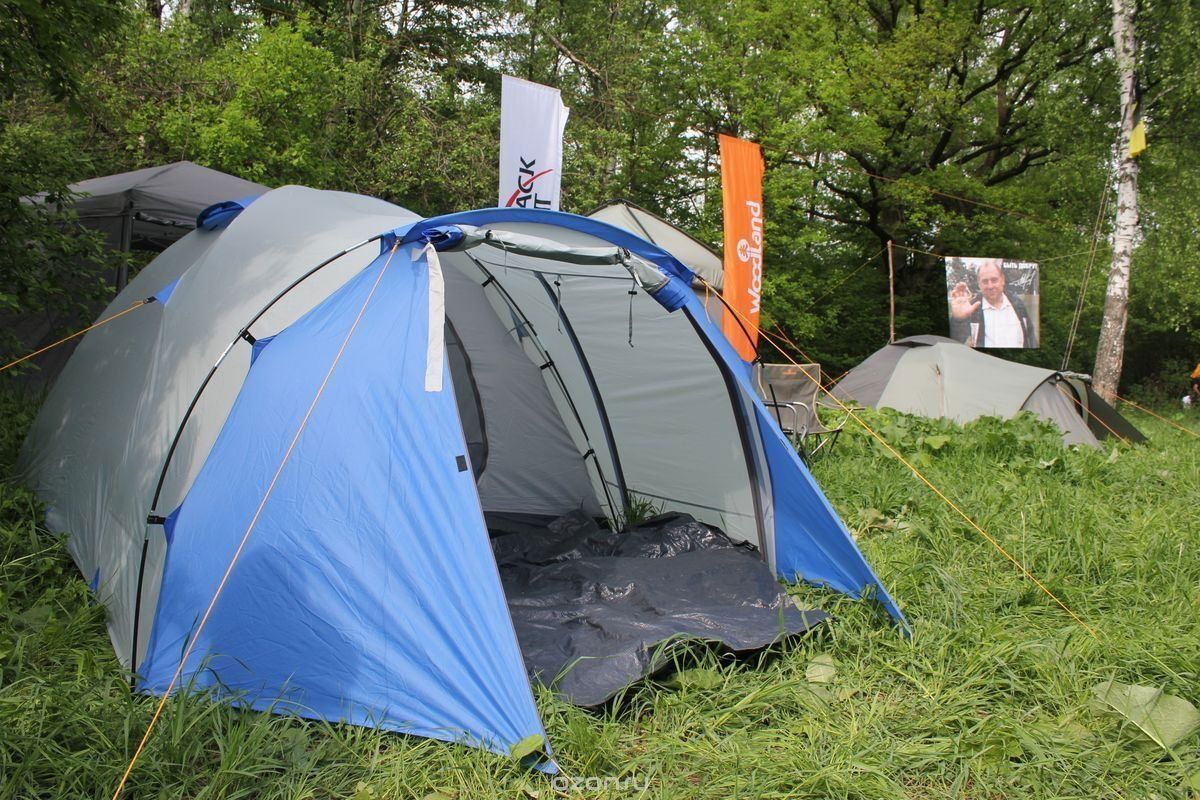
Ranking of the best tourist tents in 2025
Now not a single long hike is possible without a tent. Currently, there are many varieties of tourist equipment. To make it easier for you to decide on the choice of sleeping equipment on a camping trip, we have compiled a ranking of the best camping tents in 2025. This list will help you deal with all the varieties.
Content [Hide]
Types of tents
- Camping - a high tent with a large number of places. Designed for families. Such inventory is more convenient to transport in a car. Of the advantages, one can single out height (you can stand at full height) and spaciousness. The disadvantages include poor warm-up and huge weight.
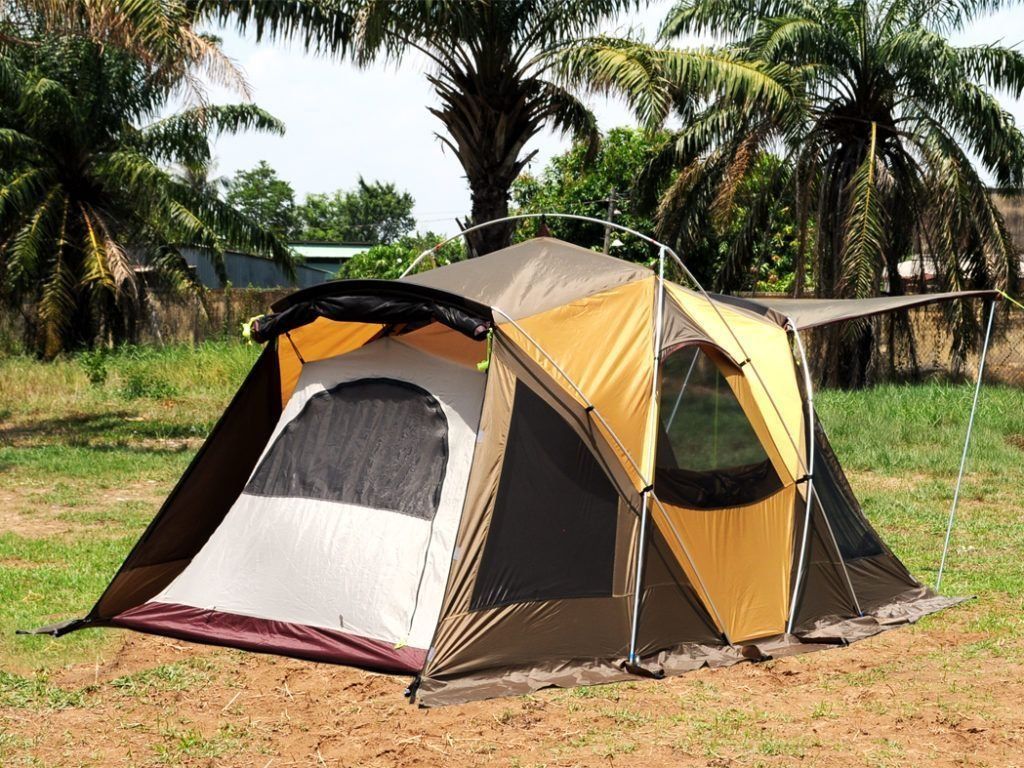
- Trekking - used for light hiking on flat terrain. It is light and easy to transport, but does not tolerate strong winds and rain.
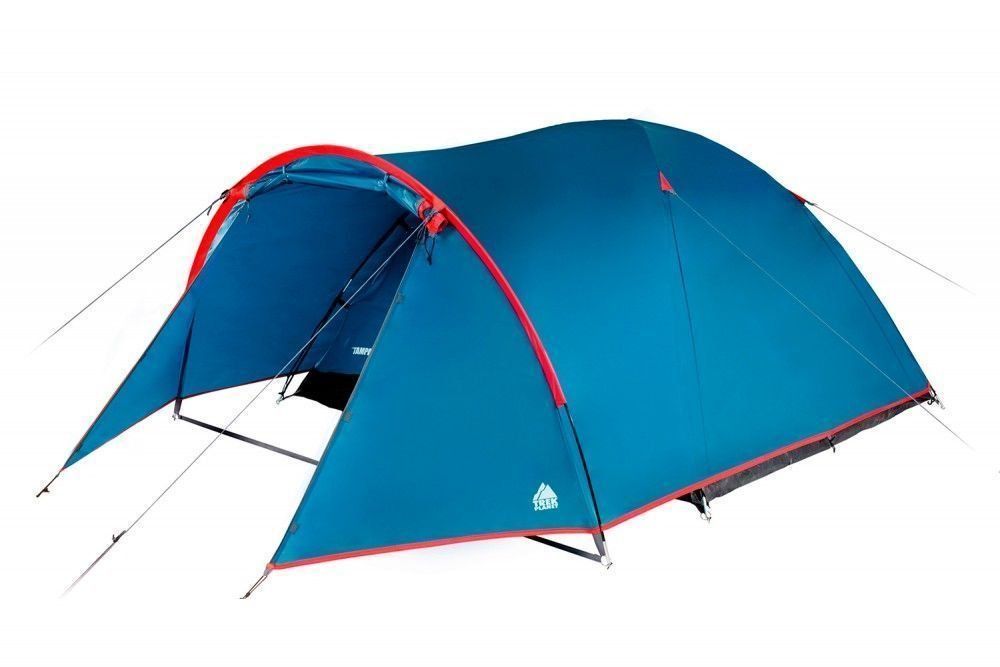
- Assault tent - is ultra light and is designed for difficult hikes and a large number of stops. It is easy to install and assemble. Can be used in rainy weather and strong winds. But there are also inconveniences. It can hardly accommodate 1 tourist.
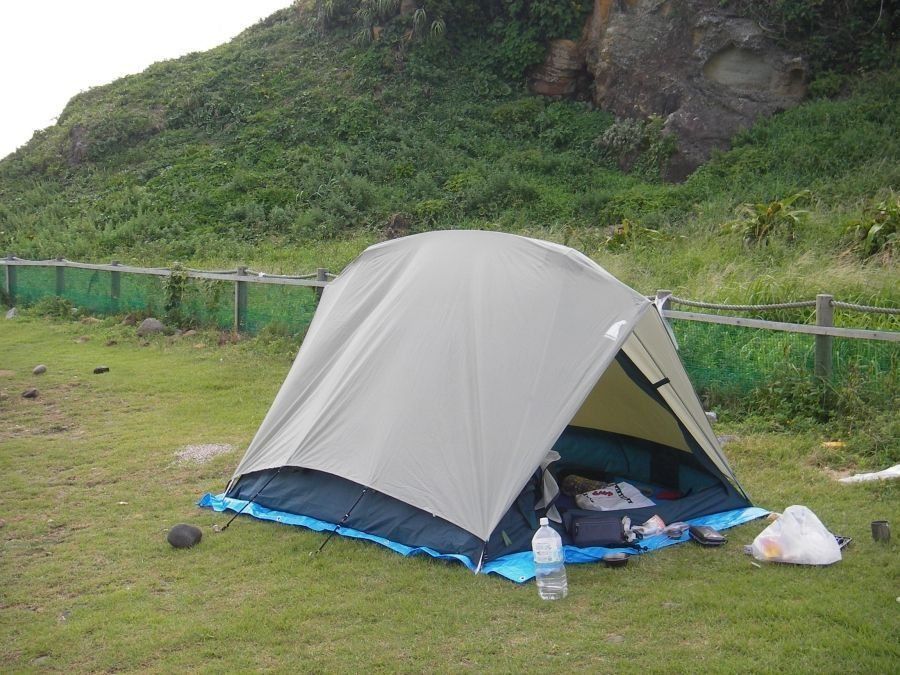
- Tent for the sea. Such tents are taken for protection from the wind. It is recommended to take on those beaches where there are no trees. Among the advantages can be distinguished: it does not heat up much, costs little and has a light weight. Cons: Doesn't protect from rain.
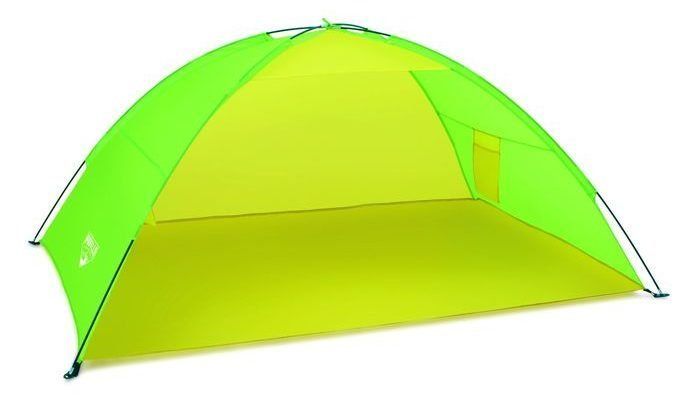
Seasonality of the tent
Beginners think that tents are divided according to seasons, but this is an erroneous opinion. The real types are:
- Summer - designed for hot weather. They have a well-blown fabric and the edge of the awning is slightly raised above the ground. This tent can only be used in sunny weather.
- Three seasons - use in spring, summer and autumn. Lights are able to withstand both heavy rains and strong winds. Made from fairly durable material.
- Winter (all-weather) - used both during calm and in extreme climatic conditions (strong wind, snowfalls).
Criteria for choosing a tent
Which tent to choose for a hike
Each target has its own separate tent.Purpose may be different:
- Bicycle trip;
- Mountaineering;
- Tracking;
- Camping.
For the first three types, camping tents are suitable, for the latter, respectively, camping tents.
Camping differs from camping in that the tent does not need to be taken apart and reassembled regularly. Almost always it is used for a one-day picnic trip, and put in a car, because its weight does not matter. A large vestibule, heavy structures, a single-layer awning - such elements are included in camping tents. Here, special attention should be paid to the size of the vestibule, because it is intended for things, or for cooking in bad weather conditions.
Camping tents are often lightweight for easy portability. Consists of a two-layer construction.
capacity
Capacity is a rather important indicator when choosing travel equipment. Tents have different capacity: from one person to the whole group. The largest tents for 12 people. They are used for special expeditions. Although if you take average students and put them in such a tent, then they will fit at least 18 people. But it's not worth experimenting. And, of course, the larger the capacity of the tent, the more it will weigh.
Therefore, when choosing such equipment, count on how many people should enter it for an overnight stay. If there are two of you, then do not take a tent for 4 people, because it will be more difficult to keep warm in it.
Most often, the capacity is calculated based on the width of the mats and rugs. The standard width of the mat is 60 centimeters, but sometimes there is a shortened version - 50 cm. If two standard mats fit there, then it is double, and if 3 are shortened, then it means 2 + 1.
Take a 1+ marked tent when you want to go on an easy and short hike. For example, if it rains at night, then you can fit your backpack there, and when it is sunny, you will get more free space inside.
Tambours
The number of vestibules also affects the size of each tent. For camping, two vestibules will be convenient. This means that the camping hut can be opened from both sides so that it is better ventilated. In 4-person tents, vestibules are used for convenience. For example, tourists can get out faster or get out at a nearby exit so as not to disturb a neighbor. If you have a tent with a smaller capacity, then the vestibule will only bring inconvenience, as well as give additional weight in the backpack.
Awning
When choosing a tent, pay special attention to water resistance. For each individual trip, it is different. The higher the water resistance, the stronger the tent and the material itself.
For example, you are going to the mountains. There, for each height, its own water resistance is needed. For a hike in the Crimea, water resistance of 3000 mm / cm2 is enough. And in the Carpathians, the water resistance of the awning must be at least 5000 mm / cm2. The higher the mountains, the more waterproof an awning you need to take. If you are hiking in difficult weather conditions, it is better to take a tent with a light color so that it is easier to find.
Optimal weight
Usually a good tent is light. There are ultralight ones, but they are much more expensive than regular ones. For a double tent, the ideal weight is 2.5 kg, and for a triple tent, 3.5 kg. Single tents are used very rarely, so we will not consider them. People rarely go hiking alone, firstly, it is boring, and secondly, and more importantly, dangerous.
But there is a lightweight view of the tents. They are produced without racks.Such inventory can be found at the Czech company Hannah. They use trekking poles as a support frame. For such tents, it is necessary to buy special stretch marks, because in strong winds they may not withstand.
How many layers to choose
Inventory is divided into two-layer and single-layer. Single-layer are made of a waterproof awning. Such inventory is easy to fold. But when the weather is humid and hot, then condensation accumulates on the walls of the tent. The sleeping bag will be wet if ventilation slots are not made in such a tent. You can also buy tents with membrane awnings, though such a pleasure will fly into good money.
A two-layer tent consists of a waterproof tent (outer layer) and a light, breathable tent (inner layer). Between the layers, the gap is usually about 15 centimeters. It weighs a little more, but it will not accumulate condensate, and it will also protect you from rain. Also in two-layer tents there is a vestibule.
Arcs of tents
They must be light and strong. If the frame of the tent is of high quality, then when one of the arcs of the tent is raised above the ground, its shape should be preserved. There are aluminum and plastic racks. Plastic arcs are made for cheap models. Other materials are also used:
- Kevlar;
- fiberglass;
- CFRP.
More durable tents with a metal frame, however, are much more expensive.
What material to prefer
In the manufacture of tents, two types of fabrics are used:
- polyamide (Nylon);
- polyester (Polyester).
The first type is durable and cheap, and also sensitive to ultraviolet light. The second type is even stronger, but much more expensive. Polyester tents do not tear when wet.
Deciphering the markings on the tent:
- Poly Taffeta 210T 3000 PU - this combination is used for marking. If you see the first word (Poly) on the package, then you know that it is made of polyester materials;
- Taffeta is the most common way to weave thread;
- In addition, there is Oxford - such weaving creates additional strength;
- Rip Stop - increases strength due to the reinforced thread, and the weight does not change;
- 210T - this marking displays the density of weaving. The more T, the denser, stronger and heavier the fabric. Sometimes a number with the letter D is applied - the combination indicates the thickness of the thread. The indicator greatly affects the strength and weight of the inventory;
- PU - water resistance of the material;
- SI - silicone impregnation.
Two layers of PU impregnation provide water resistance to 3,000 mm of water column; three layers - 5,000 mm.
For rare walks along famous trails, a nylon tent is perfect, where there will be a Taffeta or Rip Stop weave type, the density of which will be from 190 to 210 T.
Forms of tourist tents
- Hemisphere. It consists of more than two arcs that are crossed with each other. This crossing makes the tent look like a dome. Such a dome, though much larger, covers the circus site. This form is considered universal, and is in great demand among consumers. Suitable for extreme weather conditions.
- Half-ribbon. The tent is big and roomy. The arcs do not intersect, but run parallel. Used only in calm and calm weather. This design can be found in camping tents.
- House. This form is considered classical. Has good water resistance. Does not withstand windy conditions. The installation process is long and labor intensive.
- Coffin - used for assault tents.Withstand strong, sometimes even hurricane winds. There are very few places.
Buying and using tips
These tips will help you save money:
- Old models of well-known companies are not inferior in quality to new ones, and their price is much lower.
- Do not be afraid to buy new brands of tents, the main thing is to make sure that all the characteristics correspond to reality.
- See reviews, consult with friends and acquaintances. If possible, borrow a tent from a friend for a while.
- The seams of the tent should be well taped.
- Storm tents improve wind resistance.
- For summer trips, take inventory of light colors. It attracts less heat. On extreme hikes, it is worth using bright tents so that in case of an emergency you will be found by rescuers.
- The entrance (exit) to the tent must be closed with a mosquito net.
- Pegs should be lightweight with maximum strength.
- The larger the tent, the greater its weight and less wind resistance.
After the purchase, do not immediately go hiking. Collect and disassemble it at home. Check with an aerosol for water permeability, and dry it after each hike. Then the tent will serve you for a very long time.
Rating of cheap and high-quality tents
Greenwood Yeti 3
votes 1
This tent is designed for three people and is designed for three seasons: all but winter. The frame is made of fiberglass. The awning is made of polyester, and the bottom is made of polyethylene. It has a mosquito net and internal pockets. Weighs 3.25 kg. The average price is about 2600 rubles. Refers to the type of trekking tents. Made in the shape of a hemisphere.
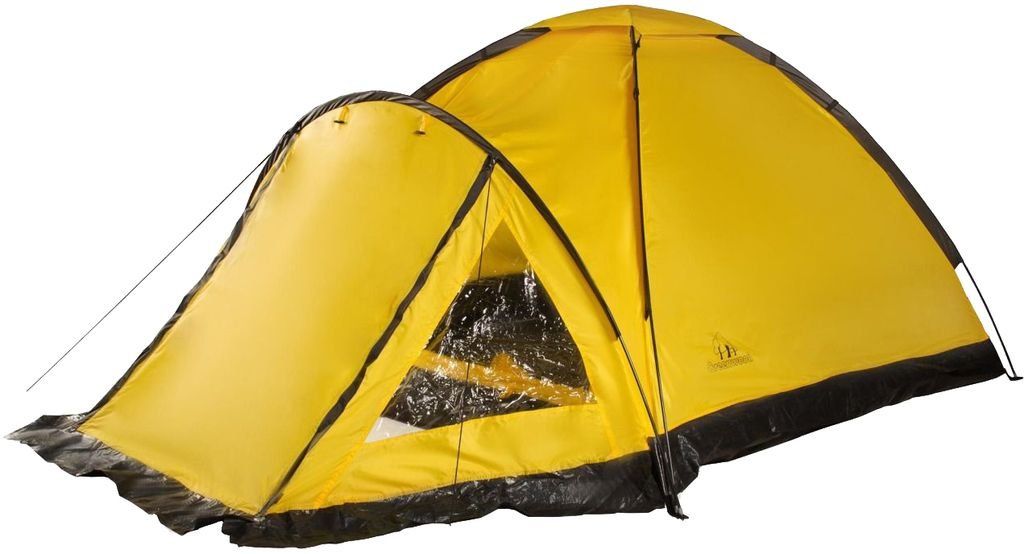
- Light;
- cheap;
- Has windows for ventilation;
- Tambour.
- Not suitable for winter hiking;
- The frames are made of fragile material.
Green Glade Lacosta
votes 0
It can accommodate more than 10 people. Can be used as a mini hut. Weighs 8.4 kg. Has 2 entrances. Average water resistance - up to 2000 mm. Frame type - external, consists of 7 arcs. The awning is made of polyester. The frame is made of steel. It costs about 7000 rubles. Of the additional options there is a mosquito net and a hook for a lantern.
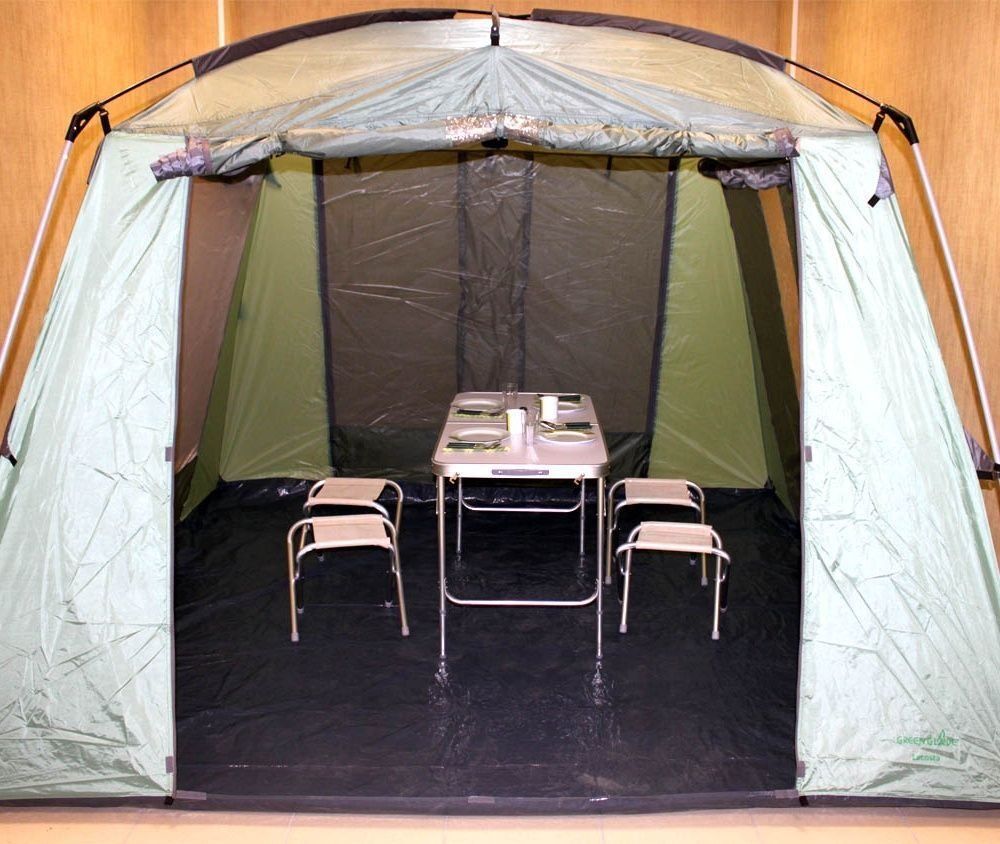
- Good capacity;
- Sturdy frame;
- There is additional equipment.
- heavy;
- Expensive;
- Not suitable for extreme conditions;
- Difficult to transport.
Trek Planet Siesta
votes 0
Spacious tent with lots of arches. Has two entrances. The frame is made of fiberglass. Has 4 ventilation windows. Suitable for three seasons. Weighs 8 kg. It costs 13,000 rubles.
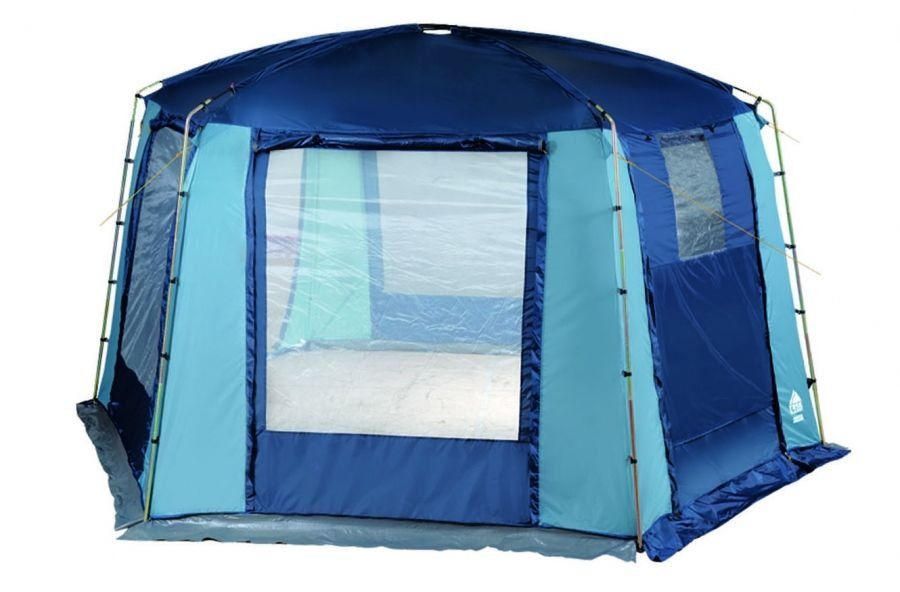
- Good capacity;
- You can sit with a company.
- Expensive;
- The frame is made of not very durable material.
Narrow 6PE
votes 0
Good camping tent that can accommodate 6 people. It has a vestibule and ventilation windows. Easy to assemble and fold. Weighs 11 kilograms. It costs 9000 rubles. It is better to transport it by car.
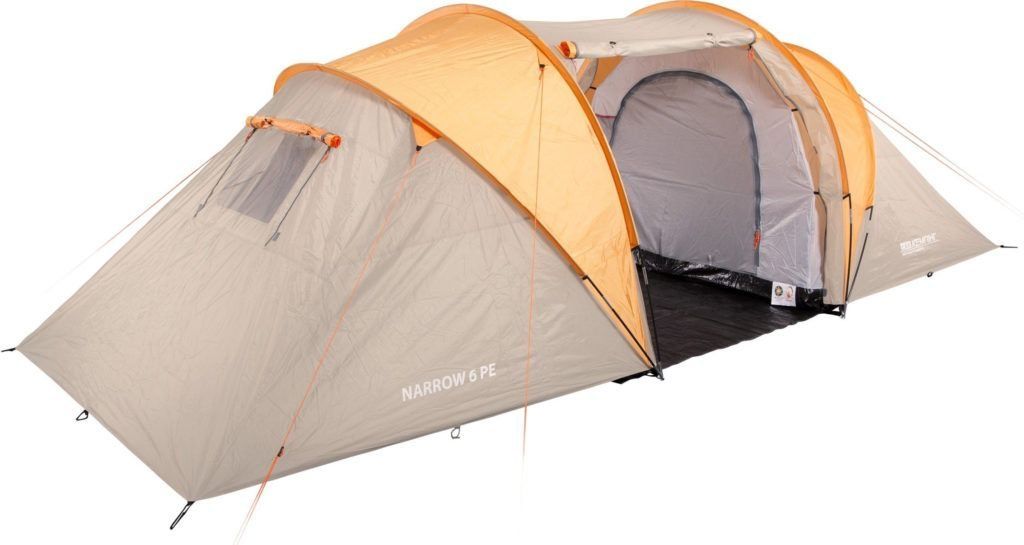
- roomy;
- Easy to operate.
- Expensive;
- heavy;
- Easy to transport by car.
Coleman 3017
votes 0
Spacious camping tent, which is designed for four people. It has a mosquito net vestibule. Weighs 5.5 kg. It costs 700 rubles.

- Even a tall person can stand to his full height;
- There are rooms: bedroom, kitchen, hallway;
- Wind protection;
- cheap;
- Light enough.
- Made from cheap and durable materials.
Hannah Target
votes 0
This tent is also designed for camping.It is enough for a family, as it is designed for three people. It costs 3000 rubles. Weighs 3.75 kg. Made in the Czech Republic. Racks are made of durable material.
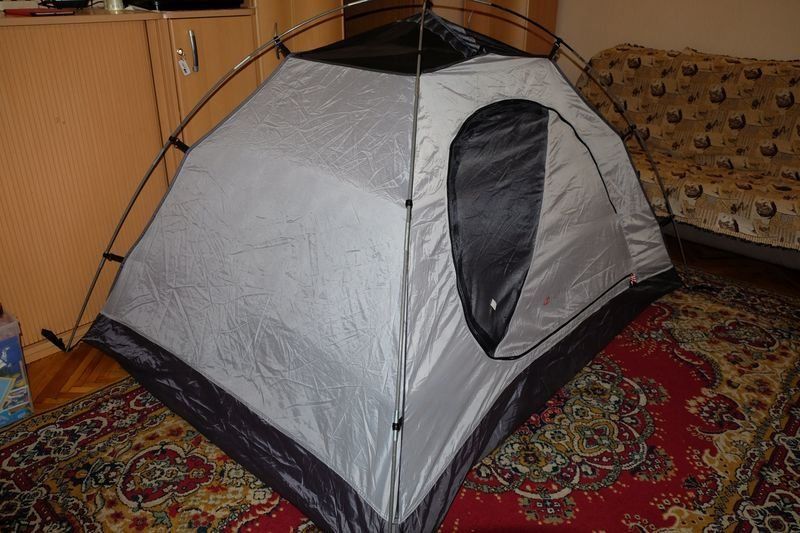
- Light;
- cheap;
- Durable material.
- Not suitable for a large company;
- No wind protection
- Does not withstand extreme conditions.
Tramp Satellite
votes 0
Ultra light double tent. Weighs 0.95 kg. It costs 4000 rubles. It has ventilation and taped seams.
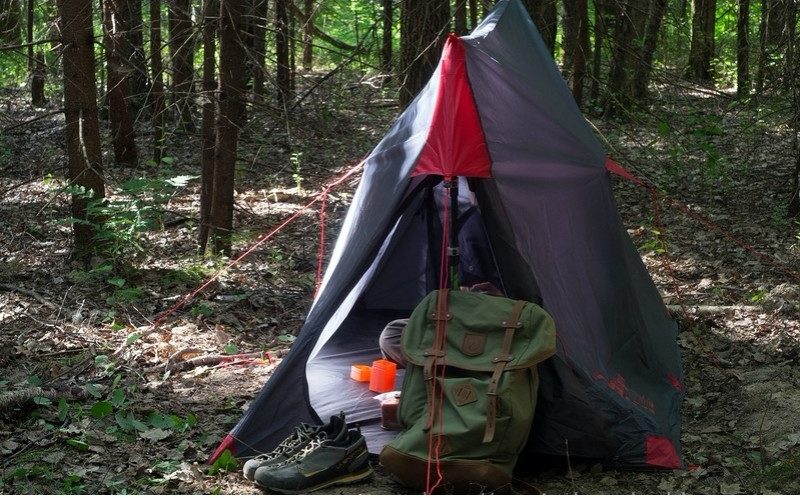
- cheap;
- All-weather (withstands all weather conditions);
- Ultra lightweight.
- Weak capacity;
- No mosquito net.
List of the best manufacturers:
- normal;
- Chinook;
- freetime;
- campus;
- The North Face;
- KingCamp;
- Terra Incognita.
Tents from these manufacturers are market leaders in terms of quality, but are often inferior in price to cheaper and, as a rule, slightly lower quality models. Based on the criteria for choosing a tent, it will be possible to purchase equipment that will be the best for a particular tourist in the trips, which will suit the price, quality and functionality.
Popular Articles
-

Top ranking of the best and cheapest scooters up to 50cc in 2025
Views: 131663 -

Rating of the best soundproofing materials for an apartment in 2025
Views: 127701 -

Rating of cheap analogues of expensive medicines for flu and colds for 2025
Views: 124528 -

The best men's sneakers in 2025
Views: 124045 -

The Best Complex Vitamins in 2025
Views: 121950 -

Top ranking of the best smartwatches 2025 - price-quality ratio
Views: 114986 -

The best paint for gray hair - top rating 2025
Views: 113404 -

Ranking of the best wood paints for interior work in 2025
Views: 110331 -

Rating of the best spinning reels in 2025
Views: 105337 -

Ranking of the best sex dolls for men for 2025
Views: 104378 -

Ranking of the best action cameras from China in 2025
Views: 102225 -

The most effective calcium preparations for adults and children in 2025
Views: 102019